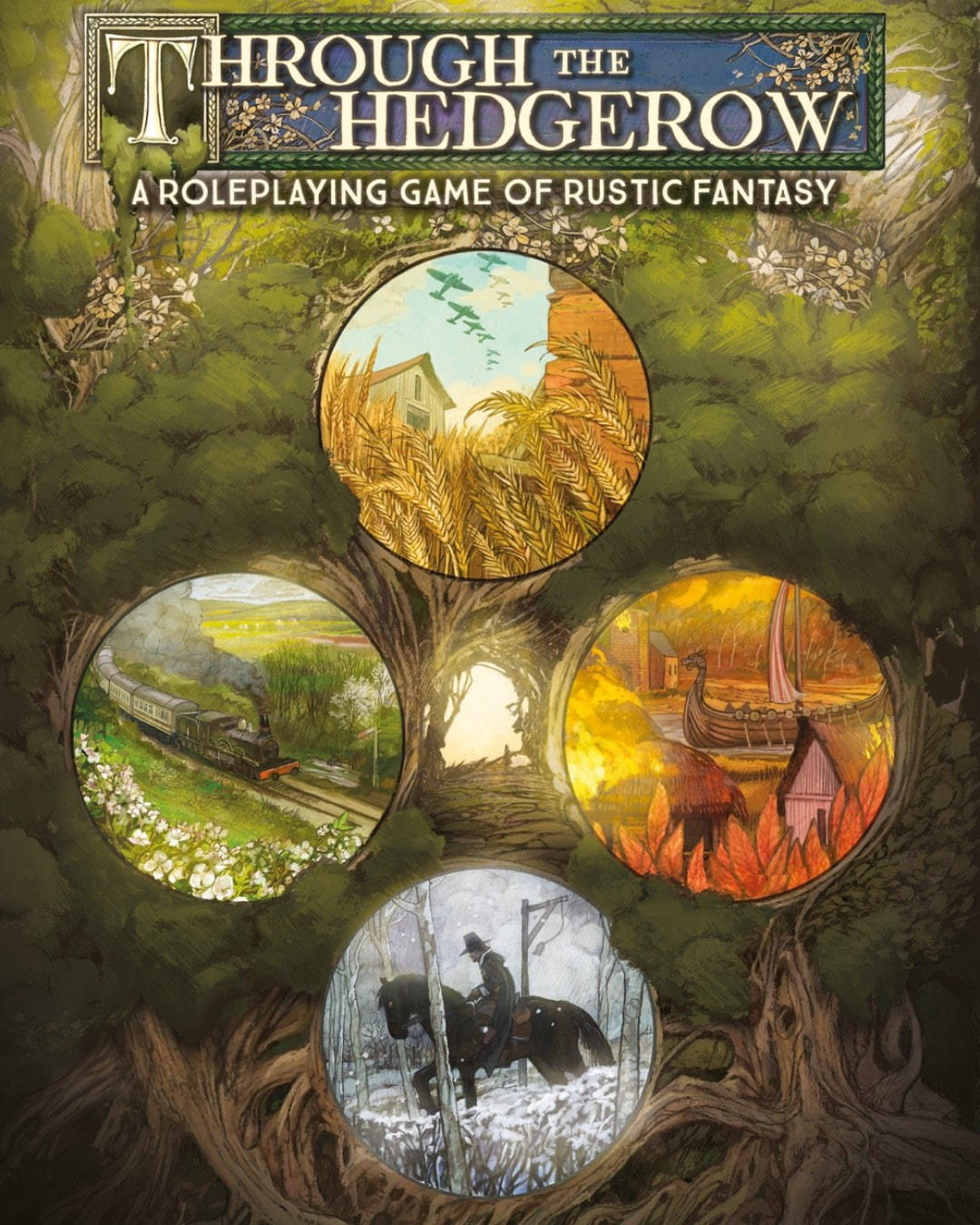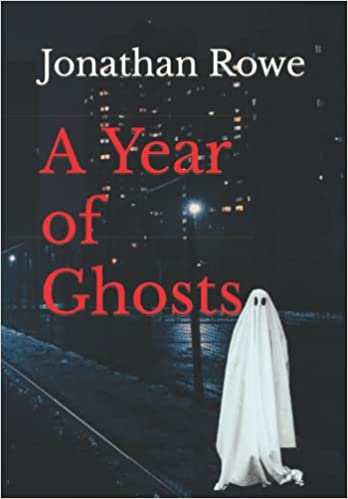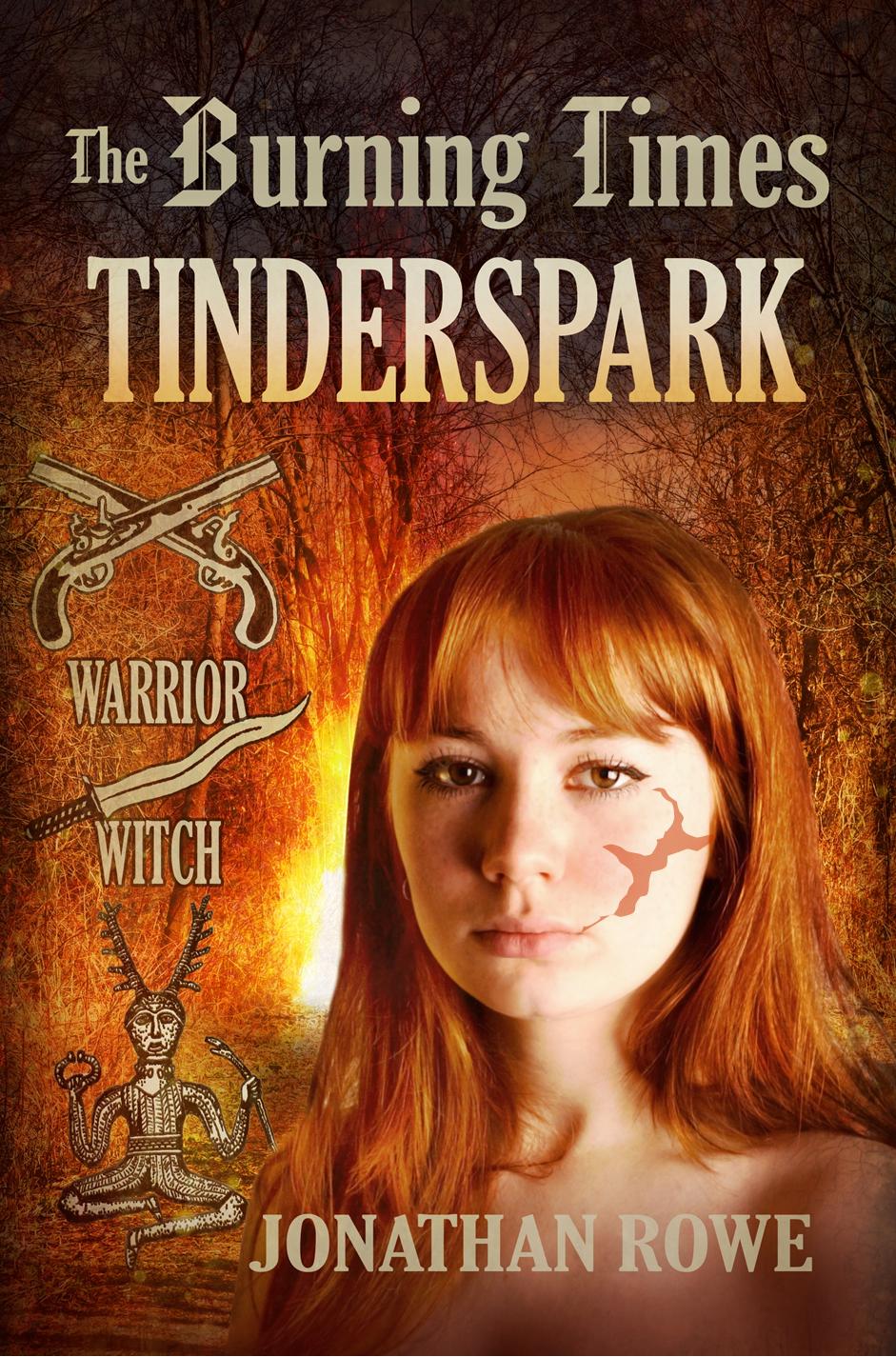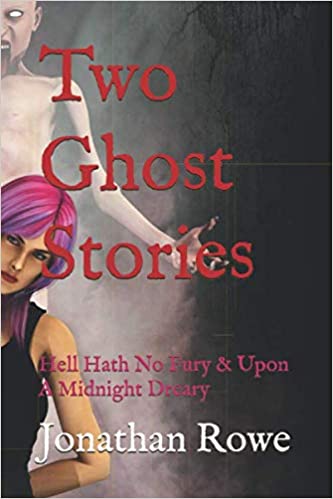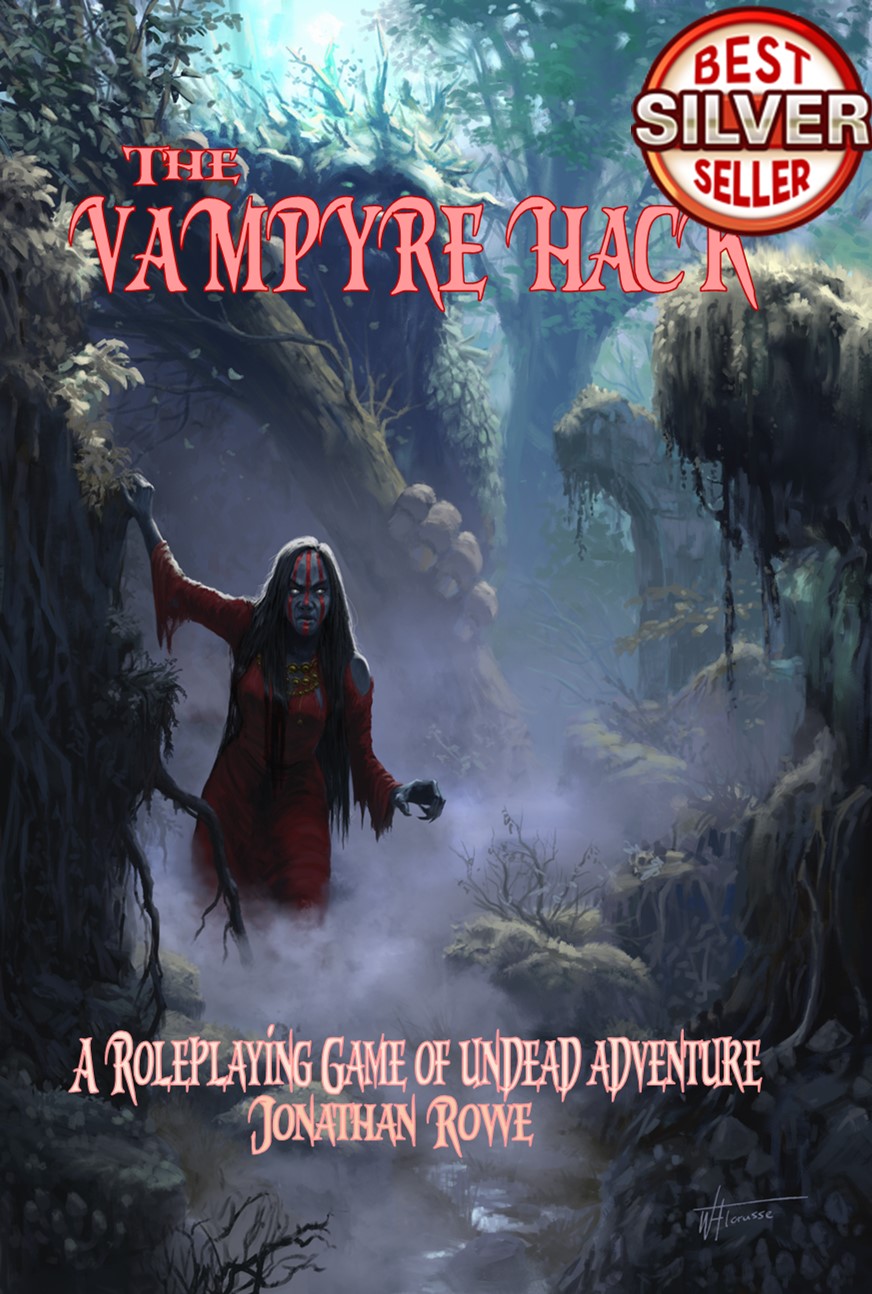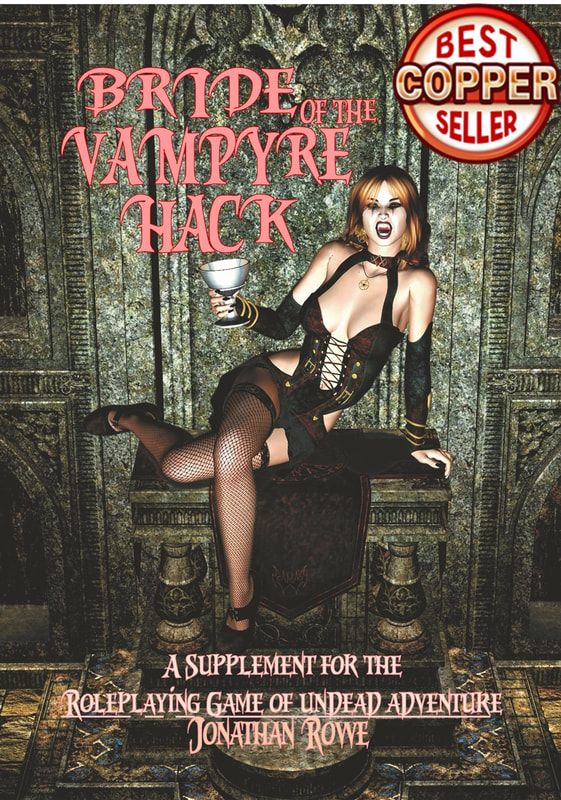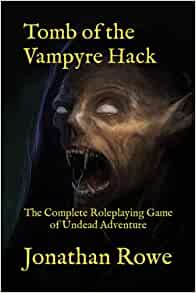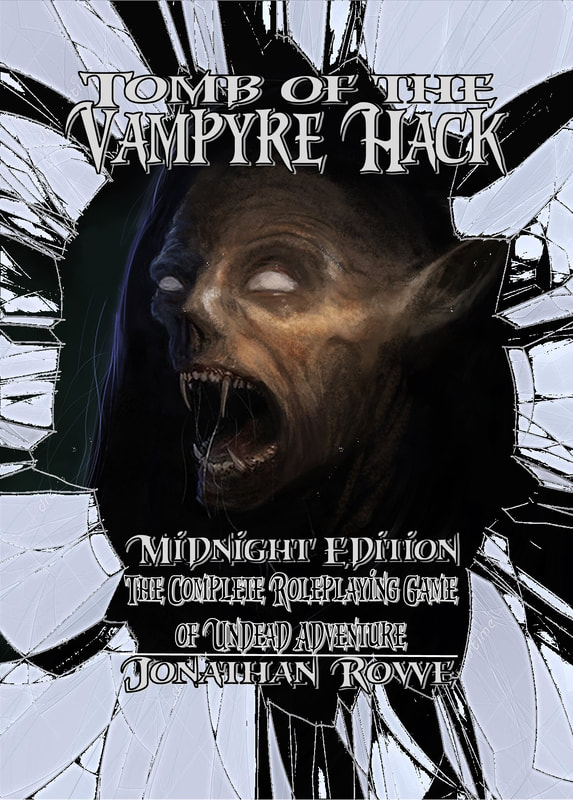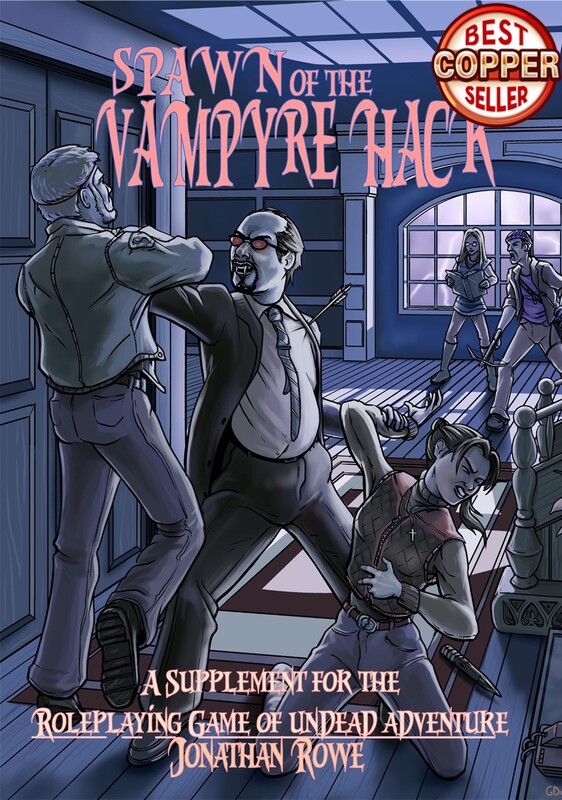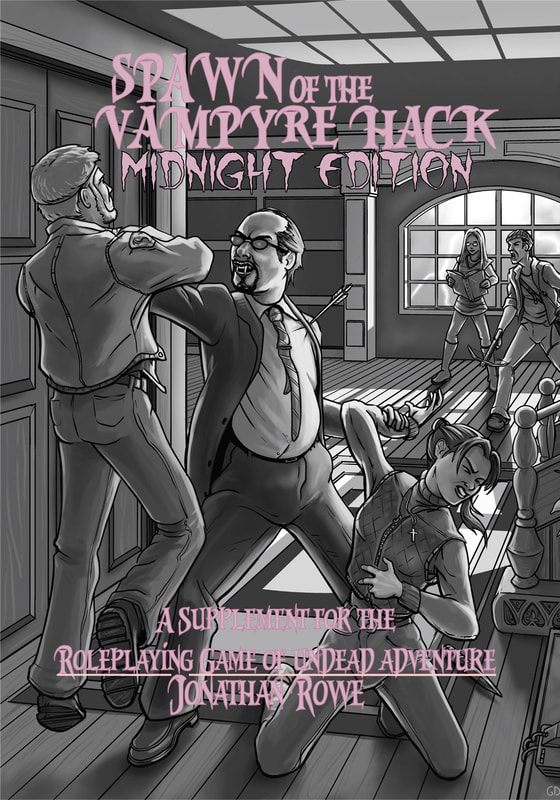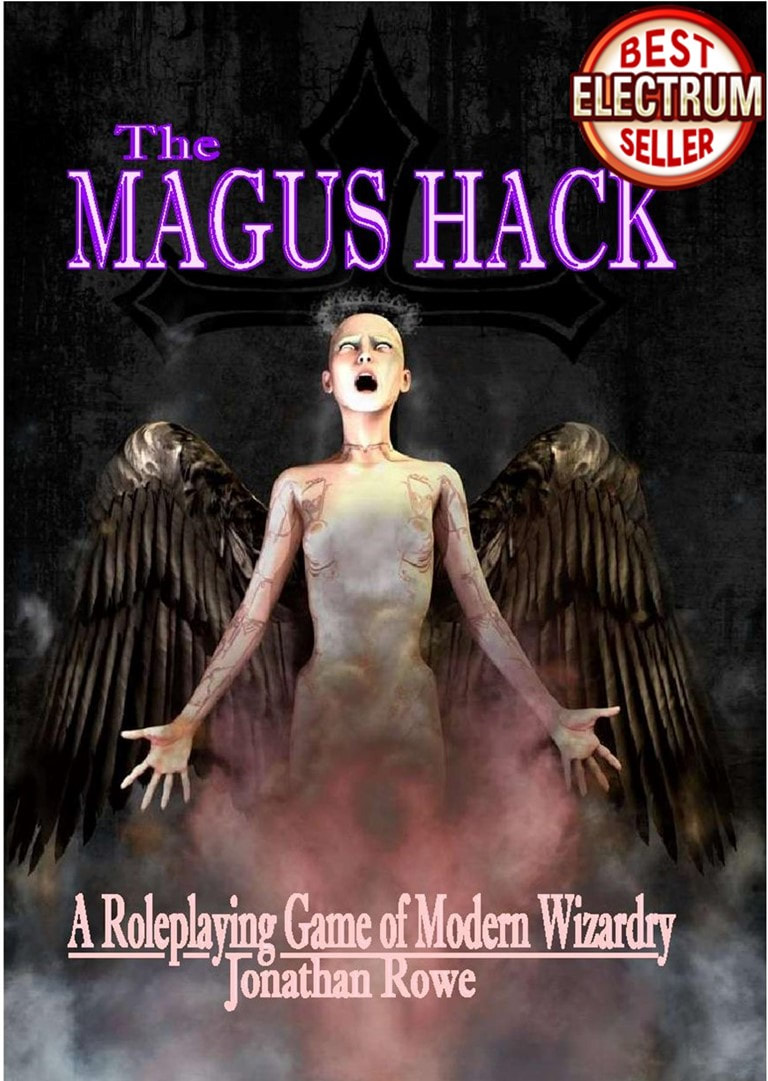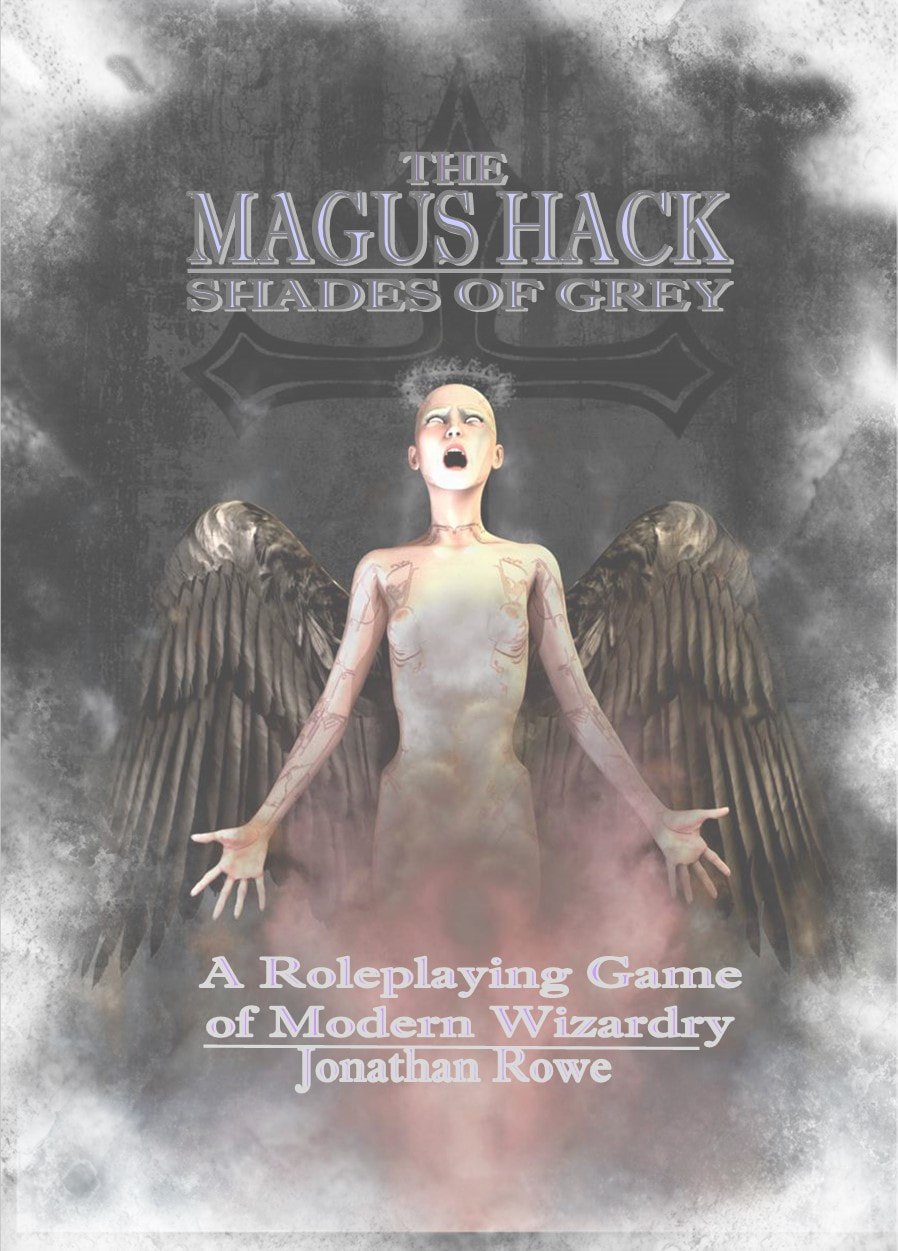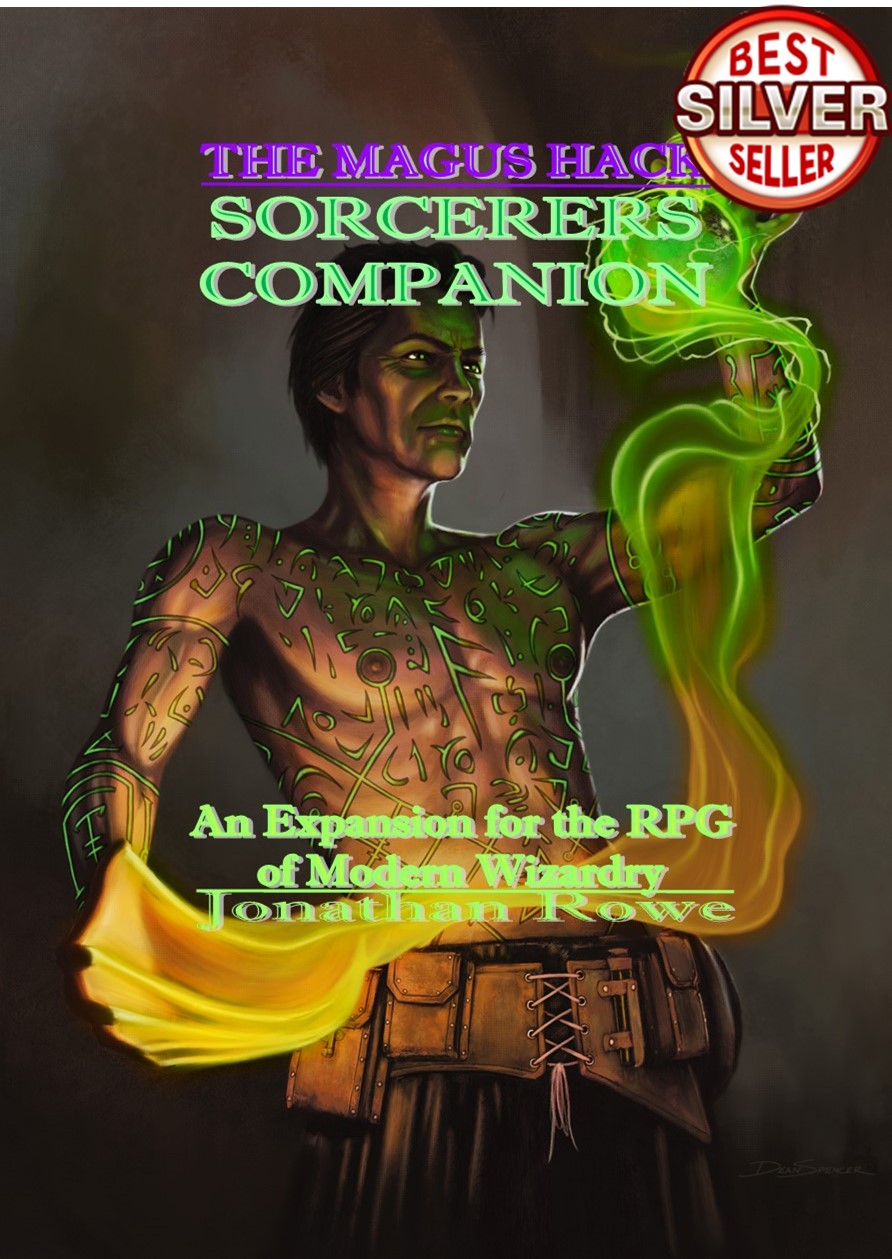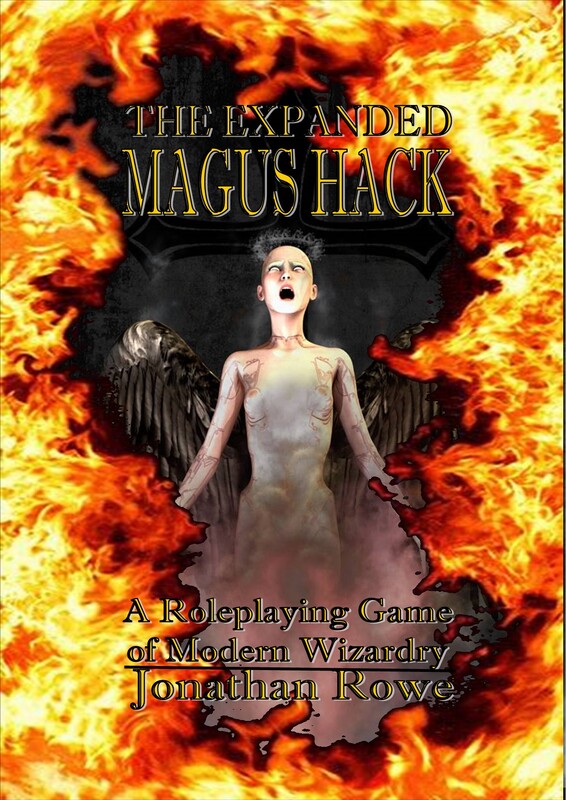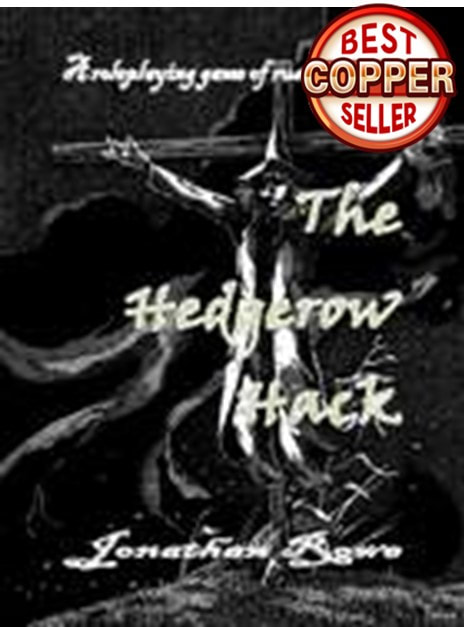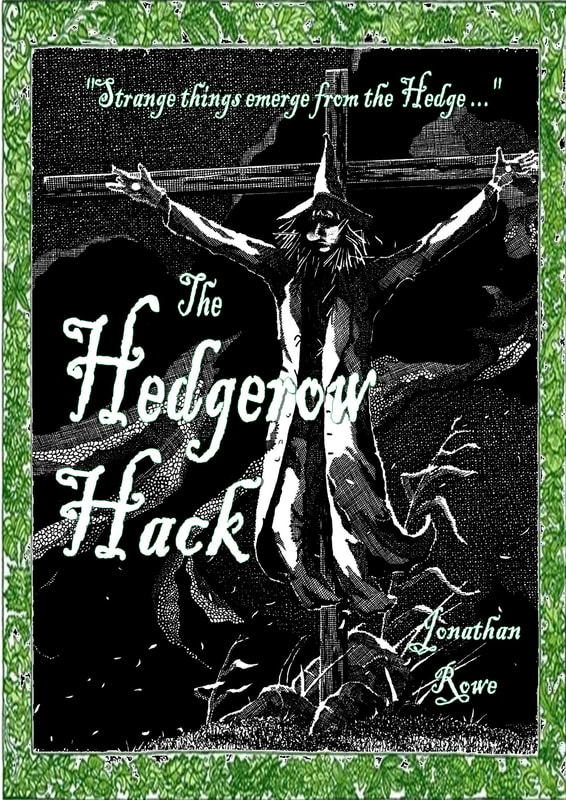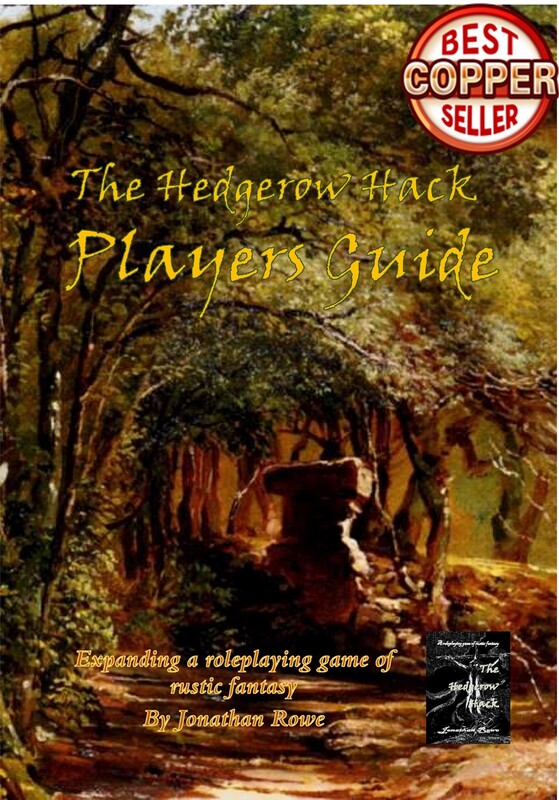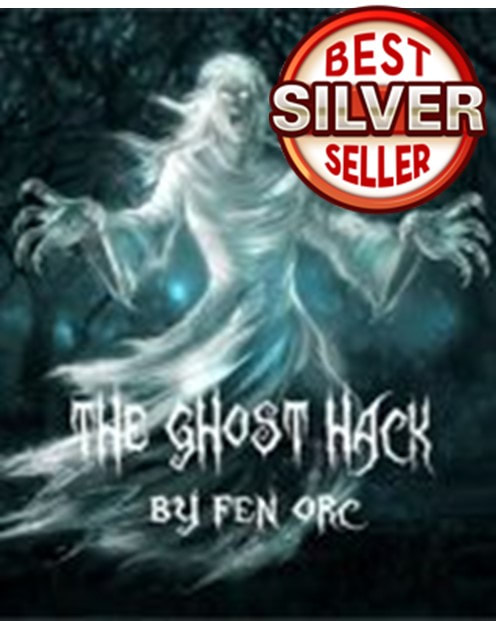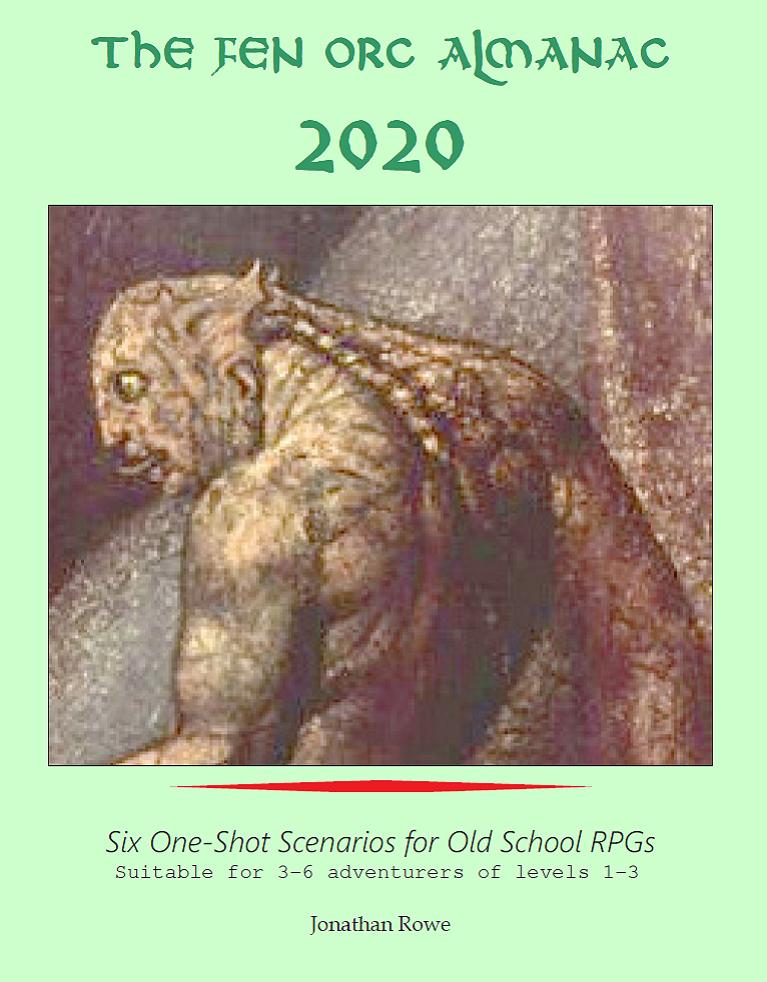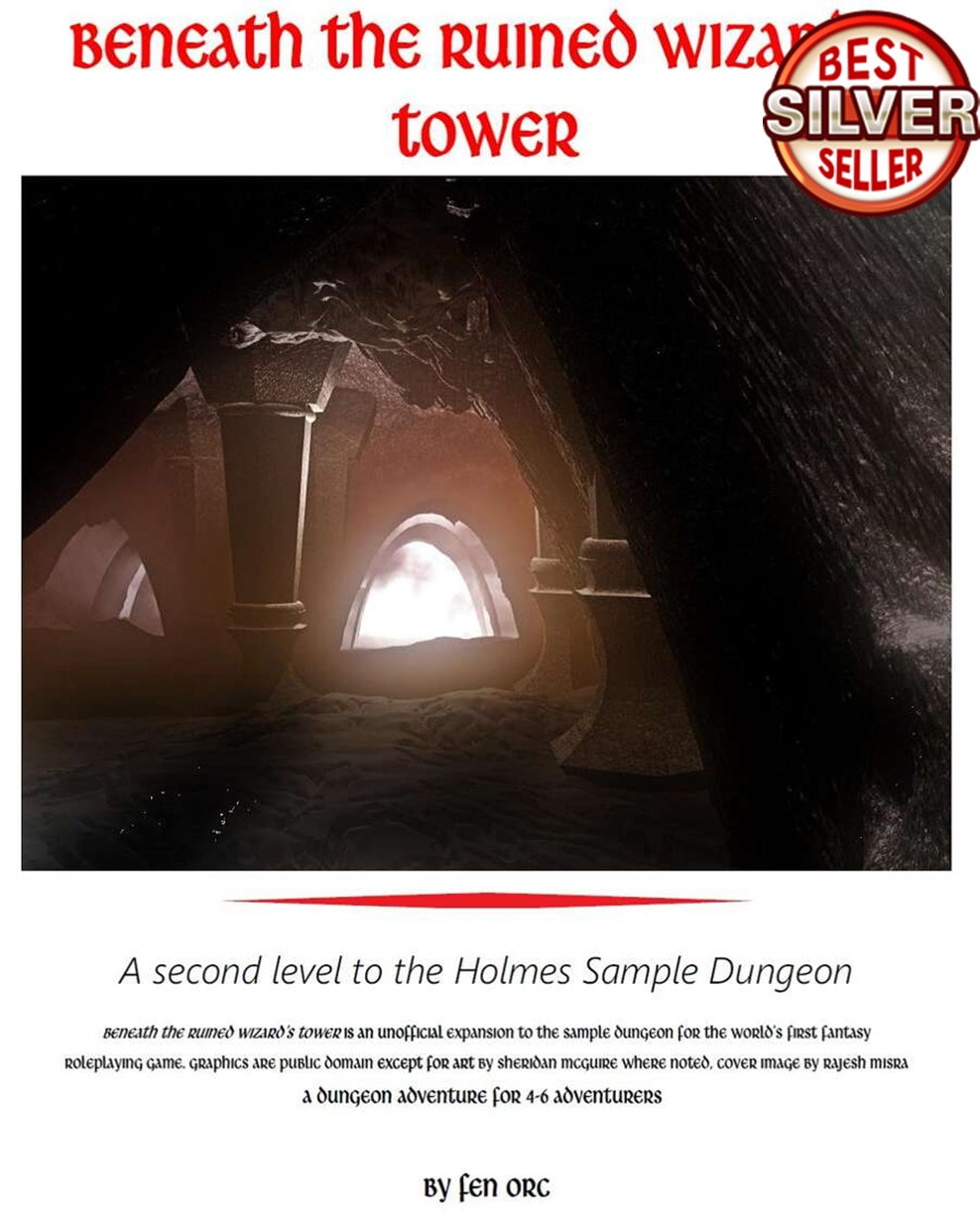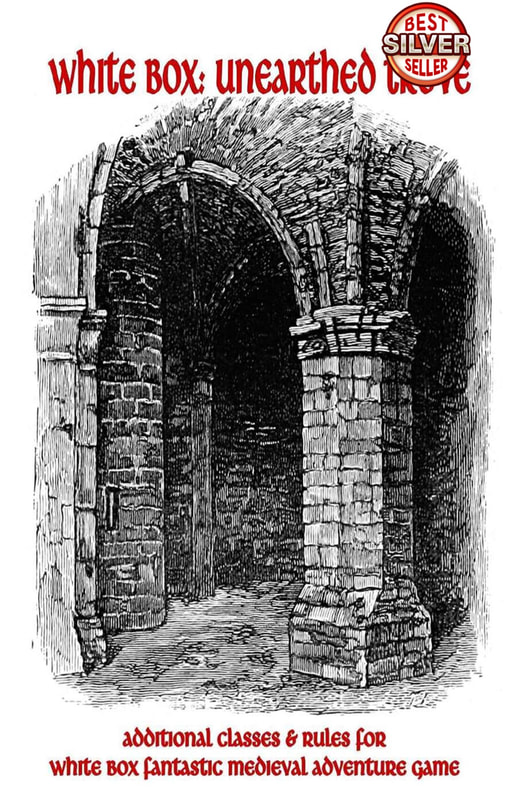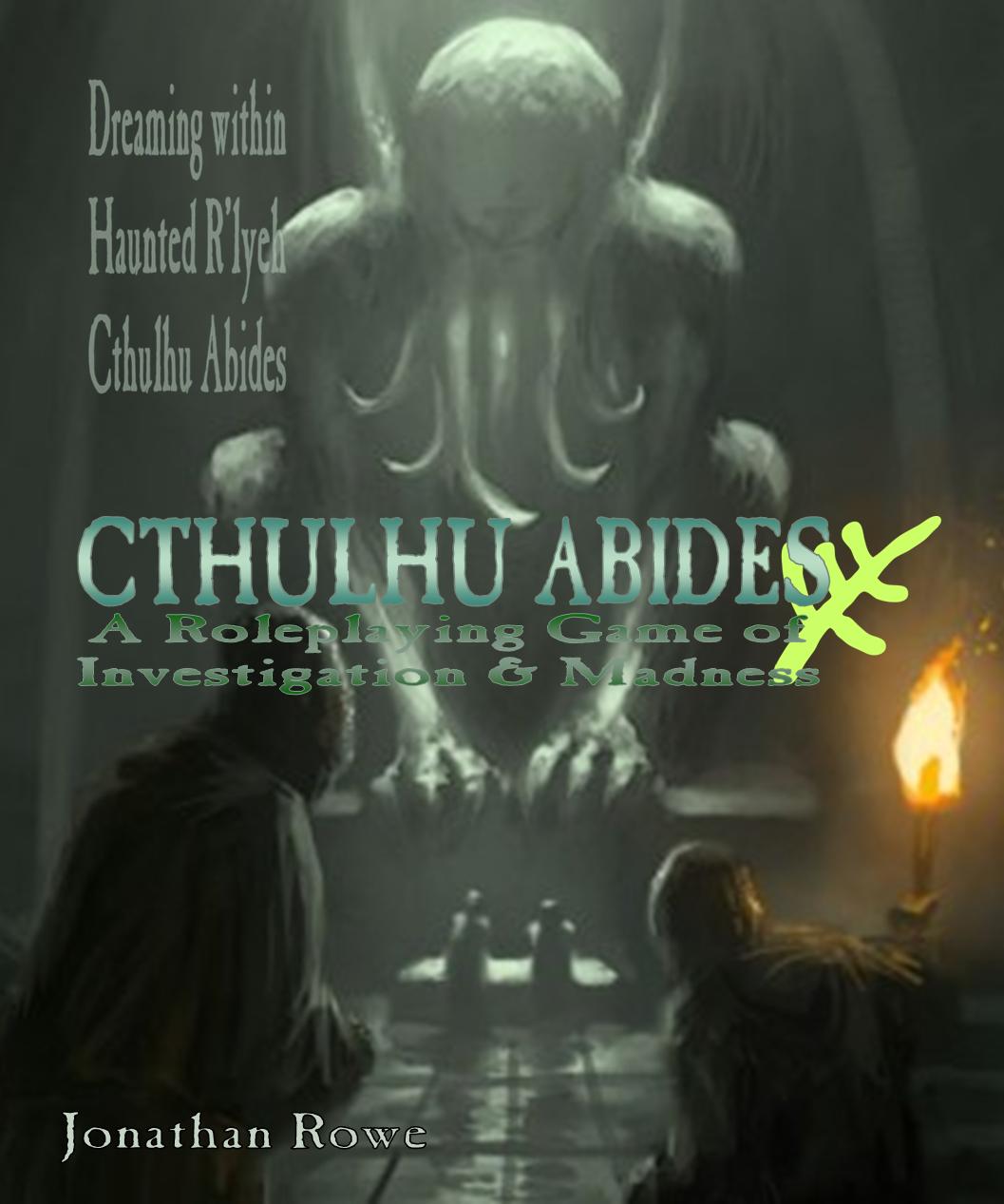If I had a hammer I'd hammer in the morning It's Hammer go Hammer It was 1990 and by then I was at the ragged end of my interest in AD&D: new games like Pendragon and Vampire were waiting to seduce me away from dungeons. I ran my last ever D&D campaign, which ended badly with everyone falling out. One fond memory I do have from that time is my brother playing a War Smith named Chynoweth. His character was very put-upon by his domineering uncle who owned ther forge where he worked. I suppose that was the start of my interest in PCs having families and communities, which explains why I turned so eagerly to Pendragon and Vampire, now that I think about it. The War Smith appeared in White Dwarf 28, which came out at the very end of 1981, a year which perhaps marked the last gasp of OD&D and its replacement by a 'completed' AD&D. Why? Well, this issue reviews the Fiend Folio compilation of AD&D monsters. That book gave us the Githyanki, Slaadi and the Drow but it was really the final hurrah of old school weirdness: the Disenchanter, the Eye of Fear & Flame, the Adherer (looks like a mummy, made of glue!) and the frickin' FLUMPHS! No, the future could be seen instead in things like White Dwarf's new character class, floated by Roger E. Moore. To call Moore's output prolific is a bit like saying Adele can belt out a tune: it barely does justice. A couple of years after this he would join TSR and ended up as editor of Dragon for a decade, eventually becoming creative director of AD&D. So work like this was his calling card. Click on the cover for a peek at White Dwarf 28 Described as "a subclass of the fighter, with special manufacturing and spell capabilities," the War-Smith sounds more intriguing than it turns out to be. Moore is comprehensive in his grasp of D&D rules and brings the same sort of nuanced approach you find in Phil Master's Demonist, but Phil knows when to cut loose and summon Slaadi death squads. Moore's stuff is always oddly pedestrian and cautious. War smiths are the makers of armour, shields, and weapons of war, as well as locks, tools, and other useful items. They worship the gods who oversee inventiveness and craftsmanship, and hold holy the creative power of fire as represented by the forge. The hammer is their symbol of power and skill... There's a lot of potential here: a mastery over not just arms and armour, but locks and tools. A divine mandate for craft and creativity. The holiness of fire. The symbolic hammer. You could really do something with this. Roger introduces War Smiths who can be humans, dwarves or gnomes, but no elves, which is odd, given the Tolkien influences on D&D. War Smiths need four pre-requisite Attributes, including a whopping Constitution; and Strength, Wisdom and Constitution all have to be 16+ for that +10% experience bonus. When you factor in the class' increased XP requirements (2,250 to get to second level), your War Smith is going to lumber up the levels. What do you get for this? Well, the Dungeon Masters Guide (pp30-34) introduces costs and times for hireling armourers and weapon smiths and, basically, your War Smith gets to do that stuff: make (normal) armour, shields and weapons. Gnomes are twice as fast and Dwarves three times as fast. There you go. Get to work. There is some elaboration. At 6th level, War Smiths make artifacts good enough to be the raw material for magical enchantment and at 10th level (tenth!!!) their weapons and armour are +1 equivalent or +2 at 15th level. It's a long wait to make this stuff (at the same sort of level at which Demonists are summoning those Slaadi Death Squads, let us note!). A nice touch is that, at 2nd level, War Smiths can make locks and confer penalties on the chance of a thief picking their locks. They get to pick locks themselves, as a thief one level lower. Similarly, at 5th level, they have a chance of identifying magic armour and weapons, but it's a laughable 05%. going up to 10% at 6th level and increasing by +05% each level afterwards. Roger notes that a 23rd level War Smith (23rd!!!) maxes out at a 95% chance of correctly identifying, say, a flaming sword. You can see why Roger E. Moore ended up running the D&D product line. He shares Gary Gygax's parsimonious approach and hatred of power-creep. Then the War Smith gets clerical-style spells at 5th level, a bit earlier than Druidic and Magic-User spells kick in for Rangers. Most of the spells are fire-related: protection from fire, creating fire, heating metal, making weapons burst into flames. The spells are economically culled from the clerical, druidic and magic-user lists and culminate in big blasters like wall of fire and flame strike. There is a set of escalating armour spells that confer automatic AC (AC6 for Armour I, rising to AC0 for Armour IV which you get at 11th level). This could be nice for the thieves and magic-users in the party, especially as they last half an hour per level, so you get mileage out of them. Armour Extension, available when you hit 15th level, doubles the duration of an armour spell, effectively making them last indefinitely - but only on yourself. I'm not sure why a 15th level War Smith would forego actually wearing armour and rely on a spell instead. Finally, and as you would expect, War Smiths are good with hammers. With these weapons, they enjoy +1 to hit and damage per 4 levels of experience. That stacks pretty nicely. Roger's new class takes a 'leave-everything-as-you-find-it' approach. War Smiths essentially do what specialist hirelings do, except for free. Their powers and spells don't alter in-game tactics much. Everything they can do another class does better, or else they can do it only when they reach a level at which it no longer really matters. But nonetheless, they're cool and they get to make things and I think there ought to be a role for characters like that. So I'm drawn to Roger's War Smith idea, even as I find his execution to be uninspired. The War Smith for White Box White Box only takes characters up to 10th level, so the whole dizzying ascent into the level-twenties that AD&D offers has to be condensed. The White Box aesthetic is to give characters their core skill set right at first level rather than letting new abilities 'ping in' at higher levels. I'm opposed to creating bespoke spell sets for new classes - but of course the War Smith could be treated simply as a type of Cleric, which I'll look at later. I love the Feats system that Szymon Piecha introduced in Expanded Lore: it's a great way to build in power progressions as options, rather than the restrictive pathways mapped out by AD&D character classes. Expanded Lore is a fantastic resource for White Box War Smiths can be Humans, Dwarves, Elves and Gnomes, with non-humans limited to 6th level as usual. Any alignment is possible. Weapons & Armour RestrictionsWar Smiths can wear any armour and use any weapons and shields. They can use magic items available to Fighters but also braziers of controlling fire elementals and a manual of the iron golem. Craft The War Smith has an extra stat – Craft (check his last column in the advancement table). He may spend his Craft points to manufacture equipment. The work lasts 1 day per Craft point used. Craft Armour: The Craft points you invest in a suit of armour must equal its AC bonus (i.e. 2 for leather, 4 four chain and 6 for plate and 1 for a shield or helmet). Craft Weapons: The Craft points you invest in a weapon equals 1 per damage step the weapon inflicts: 1 for 1d6-1, 2 for 1d6 and 3 for 1d6+1. Craft Tools: Crowbars, grappling hooks, lanterns, oil (!), spikes and thieves tools cost 1 Craft per 5gp cost Craft points are regained when the item works as it was designed to. If the War Smith sells items, she recovers the Craft points at the end of the month. If the War Smith provides items for herself or adventuring companions, the Craft points are recovered at the end of an adventure in which they are used. Optional: Racial Crafting Specialisms
I'm tempted to add Halfling Victualers - or Food Smiths! - who can make leather armour, rations, herbs and drink in the time Gnomes make tools. They are limited to 4th level though.
I'm tempted to add Halfling Victualers - or Food Smiths! - who can make leather armour, rations, herbs and drink in the time Gnomes make tools. They are limited to 4th level though. Holy Hammer The War Smith receives +1 To Hit and damage when fighting with a hammer of any size. The hammer is treated as magical for purposes of damage undead, fey and demons. Saving Throws & TraumaWar Smiths save at +2 vs Paralysation and attacks based on fire. If you use the Death & Dismemberment rules, War Smiths can sacrifice a shield, helm or parry weapon to negate all Injuries from an attack. They do not gain Trauma from taking fire damage past 0 HP or experimenting with magical weapons/armour/shields/helms. It might not sound like much, but War Smiths will really value these two powers and settle into a happy cycle of sacrificing arms and armour to avert Injuries then manufacturing new ones.
And yes, I did complain about the 'point pool' used for Paladins in the new version of Expanded Lore. But I'm treating Szymon's document as 'canon' and, although I don't much like the idea of 'Pride points' for Pa;adins, I think Craft points for War Smiths work pretty well. Establish Sacred Forge At 9th level, the War Smith gains the title 'Master Artificer' and can build a Forge, which is a sort of temple-workshop dedicated to furthering their craft. He will attract a group of soldiers and apprentices who will benefit from his skill and powerful rulers (and perhaps monsters) become his customers.. War Smith Feats Many of these Feats allow a War Smith to make +1 arms or armour. This equipment gets its bonus from its superior construction but is not considered magical for purposes of hitting enchanted creatures.
If you are already an Armourer (see below) you could make +1 leather armour for 4 Craft points. Arcane Forge lets you invest the points permanently to make enchanted (rather than just very good) +1 armour and investing 8 Craft points gives it an unusual feature (say, ethereality). You never get those Craft points back. That armour was you life's work. Treasure it. However, Dwarves only have to invest 4 Craft points, because their investment gets doubled for making armour. Optionally, Halfling Victualers can use this to make Potions (rolled randomly) by investing 1 permanent Craft.
Players might approach a NPC War Smith and offer to buy superior arms and armour. Alternatively, PC War Smiths might want to enrich themselves by selling this stuff. Assume the cost is equal to the base cost of the item multiplied by the number of Craft points invested in it and the level of the War Smith. So going to a 5th level War Smith for +1 chain mail will cost you 30gp (for the mail) times 8 (for the Craft invested) times 5 (his level) = 1200gp. Actual magical weapons are never for sale and PCs are hardly likely to sell them. Commentary War Smiths advance slightly more slowly than Fighters and punch slightly weaker - but their Holy Hammer more than compensates for them in combat. They save like Clerics but their Hit Dice progression is somewhere between Fighters and Clerics. I suppose they are sub-Fighters, being just a smidgin inferior to Fighters across the board (except with hammers!). A first level War Smith with 2 Craft points can make leather armour or a sword or perhaps a couple of daggers or shields. If they are an Elf, they could make two swords for 1 Craft each. This isn't a big deal until Feats appear at third level (remember, Humans gain a Feat at first level too). A third level War Smith with 6 Craft points can make plate mail armour but if they take the Armourer Feat then they can make +1 armour. Making +1 plate mail will cost 12 Craft, so that's out of reach (although a Dwarf could do it). Making +1 leather armour costs 4 Craft, so that's possible and the War Smith gets the Craft back (and keeps the +1 armour) at the end of the adventure. If you pick up Arcane Forge at 5th level, you now have 10 Craft and you could manufacture that genuine enchanted +1 leather armour. Maybe it turns out to be Armour of Etherealness (although +1 leather, not +3 plate as would be more typical). Amazing! But those Craft points are gone forever. You poured your soul into that armour. See why it's not for sale? Since Dwarves and other non-humans are capped at 6th level, they'll not have more than 12 Craft points to play with. That's enough for Dwarves to make that +1 magical plate mail and blow all their Craft on it. Elves could manufacture 3 magical +1 swords in their working life. Gnomes could make a dozen sets of +1 magical arrows. This War Smith gets to do the things I wanted it to do: make cool stuff! White Box is a bit more generous than AD&D with its treasures, so by the time War Smiths can make powerful magic items, they might not need to. War Smiths as White Box Clerics An alternative approach is to treat the War Smith as a Cleric devoted to a god or goddess of forging and craft. This type of Clerical War Smith advances as a normal Cleric and gets access to normal Clerical spells. If using Expanded Lore, the God's Weapon ability applies to the Clerical War Smith's hammer. Priestly Crafter Instead of turning Undead, give Clerical War Smiths the skill to craft items using this table. The player rolls before an adventure (or each month) to see what they have made and can make on attempt at each category of items, rolling 3d6 just like a Cleric turning Undead. F means the Clerical War Smith creates these items automatically and can do so during an adventure from raw materials to hand if they can work for a turn. Here's an example. If Chynoweth is third level, then before an adventure he rolls to create a shield (4+, almost a certainty), a helmet (7+, highly likely), 4d6 arrows (10+, a fifty-fifty thing), a weapon that inflicts 1d6-1 damage (13+, if he succeeds he might decide it is a short sword), 1d6 flasks of oil (15+, unlikely) and a suit of leather armour (17+, very unlikely). Let's say he ends up with a helmet and shield, 13 arrows and a short sword. He can keep them, sell them or give them to adventuring companions or hirelings. If he sells them, he should get XP for their gold value. Clerical War Smith spells Some of Roger E. Moore's original War Smith spells can be included for White Box, like these, which are only available for Clerical War Smiths. I've added a couple of my own. Produce Flame Spell Level: C1 Range: 60ft Duration: Until extinguished The caster can create a small fire (covering an area about a foot in diameter) that will burn fiercely for 1d6 rounds and then go out. However, anything it sets fire to will continue burning normally. Resist Fire Spell Level: C2 Range: Touch Duration: 2 hours The target of this spell becomes immune to normal fire and saves at +2 vs magical fire. Firehammer Spell Level: C3 Range: 1 hammer Duration: 1 hour A hammer busts into flames, burning like a torch. It receives +1 To Hit and inflicts an extra 1d6-1 fire damage. The Cleric can handle the firehammer and so can anyone the Cleric personally gives it to. If the hammer is dropped or thrown the spell expires at the start of the next round. Superior Crafting Spell Level: C4 Range: Touch Duration: Permanent Cast this before rolling to manufacture an item. If you manufacture it successfully, it is superior quality (+1 To Hit and damage) but not magical. This spell slot is used up and is not recovered until the end of the adventure (or the next month). Enchanted Crafting Spell Level: C5 Range: Touch Duration: Permanent Cast this before rolling to manufacture an item. If you manufacture it successful, it is magical (+1 To Hit and damage) and it will have a Minor Ability or Unusual Feature. These spell slots are used up forever. Spell slots are shown on the Cleric Advancement table (White Box, p12). A sixth level cleric gets 1 spell slot for 4th level spells and could use it to cast superior crafting, but would not then be able to learn any other 4th level spells until the end of the adventure. An eighth level Cleric has 2 4th and 2 5th level spell slots. If she uses enchanted crafting to make a magical weapon, one of those 5th level spell slots is gone forever. When she reaches tenth level, she will return to having 2 spell slots instead of gaining a third. As with the standard War Smith, making magical items is a labour of love and takes something from the creator that is never recovered.
0 Comments
Leave a Reply. |
30 Minute Dungeons
Essays on Forge
FORGE Reviews
OSR REVIEWS
White Box
THROUGH THE Hedgerow
Fen Orc
I'm a teacher and a writer and I love board games and RPGs. I got into D&D back in the '70s with Eric Holmes' 'Blue Book' set and I've started writing my own OSR-inspired games - as well as fantasy and supernatural fiction.. Archives
July 2024
Categories
All
|

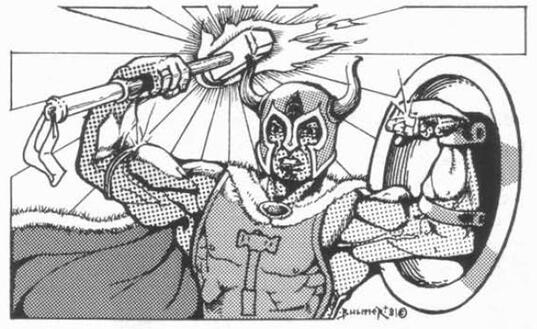

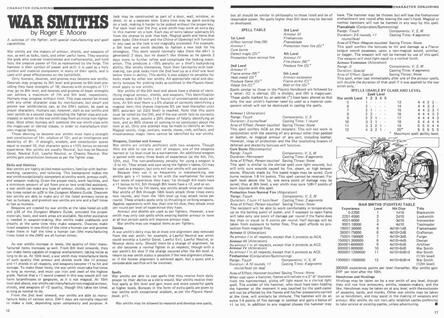
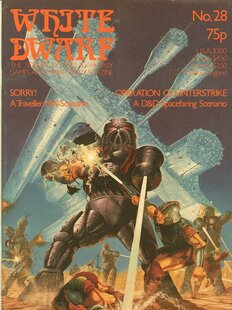
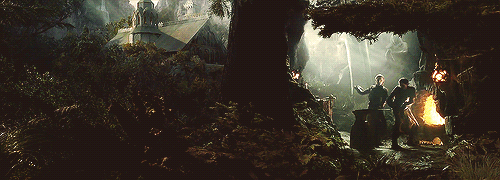
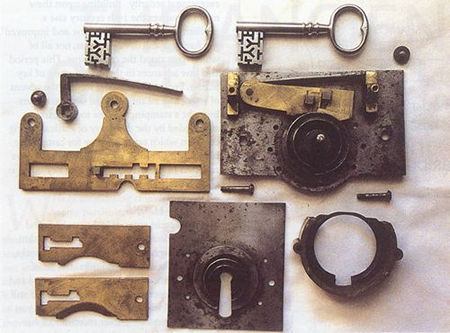
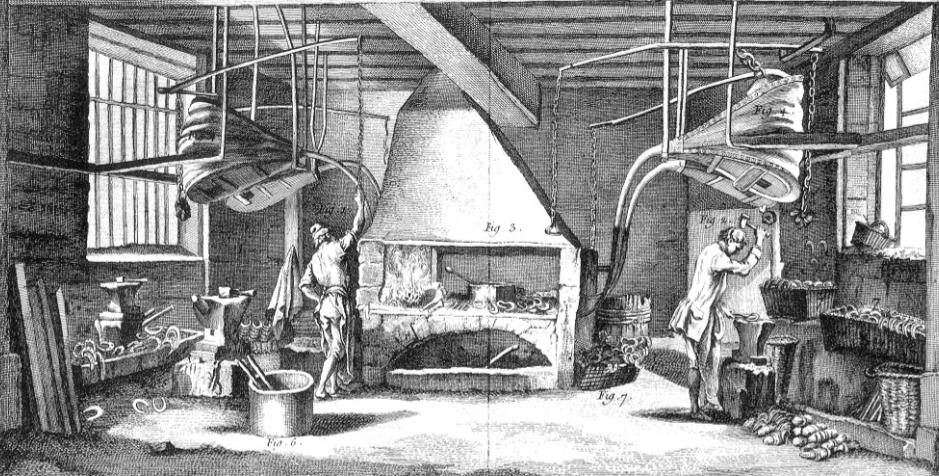
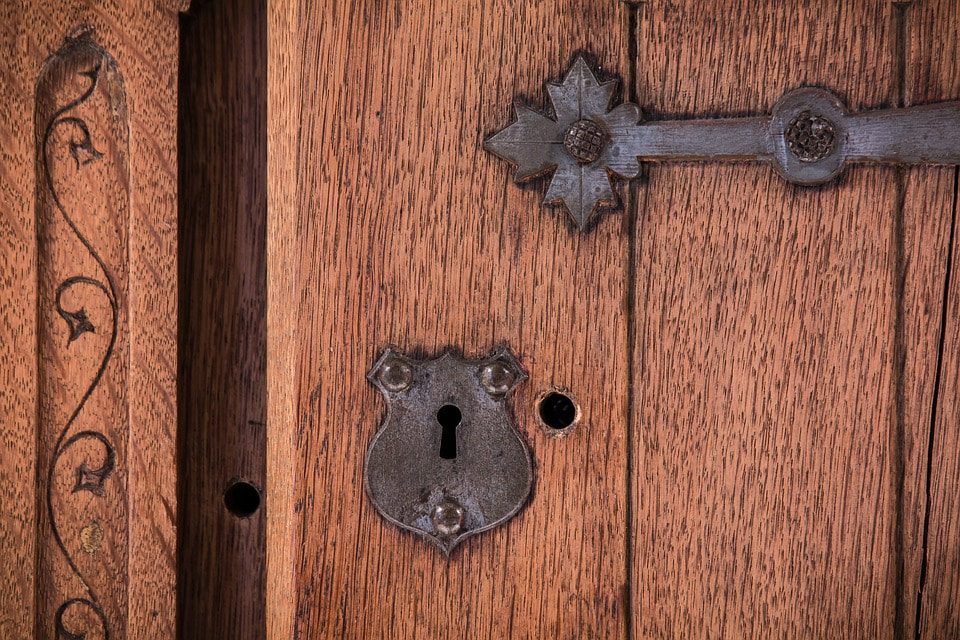
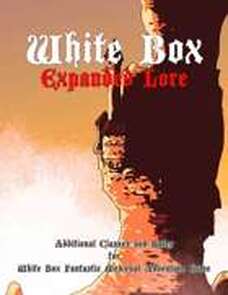
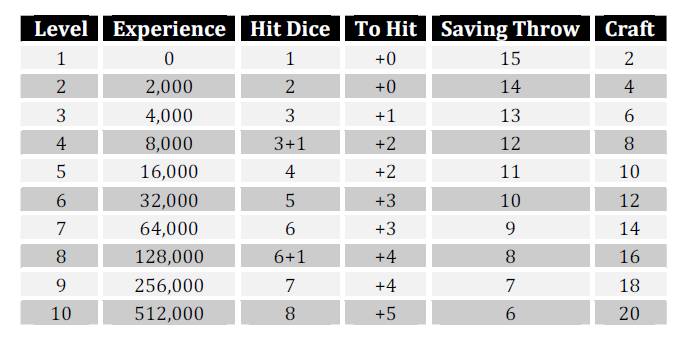

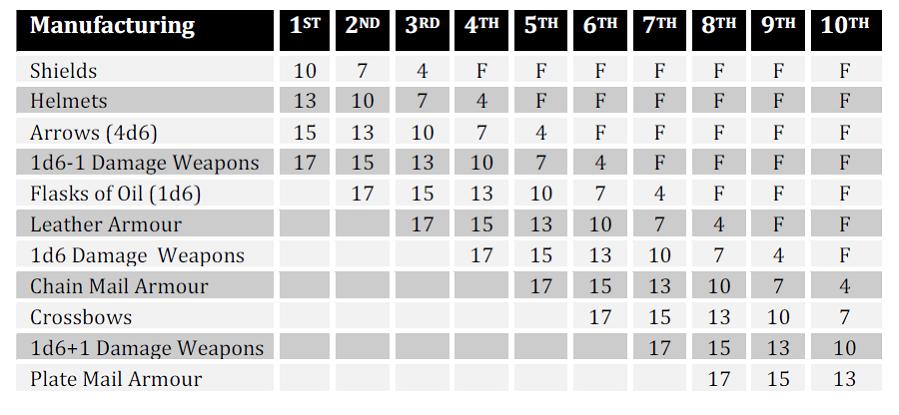

 RSS Feed
RSS Feed
